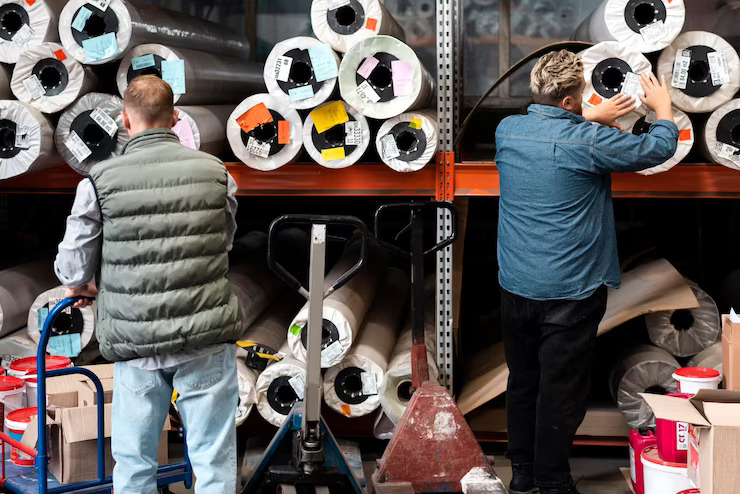Introduction:
Nowadays cotton dyeing has become the main subject for discussion. Lot of expansion on cotton dyeing are coming up like cotton fiber dyeing units (for mélange shades and polyester /cotton blended solid shades). Yarn dyeing units (for terry towel, socks, shirting and suitings) and fabric dyeing units (for woven and knitted fabrics). It can be classified further to continuous (pad-dry-pad steam) and cold silicate pad batch dyeing process.
The competition is so stiff that the units are trying their best to provide high quality material to survive in the market.
Cotton dyeing is difficult as compared to synthetic dyeing. As cotton is a natural fibre lot of variables come into play during dyeing. The cotton technicians should be qualified to understand the problems and convinced the top management. Results will come gradually.

Factors Affecting the Dyeing of Cotton:
The principle of cotton dyeing is to exhaust as much dye as possible onto the fibres. This exhaustion of dye is affected by the following factors.
- Dissolving of dyes.
- Water quality.
- Substantivity of the dye.
- Temperature of the dyebath.
- Kind and amount of alkali.
- Liquor ratio.
- Amount of inorganic neutral salt.
- Effect of metallic ions in water.
The following factors are described as below:
1. Dissolving of Dyes:
The dyes are best dissolved by pasting with cold water and pouring hot water (50 –55 deg c) with high speed stirring. To avoid losses and colour yield through hydrolysis following precautions are necessary.
- The pH of water should be slightly acid to neutral. if alkaline make neutral by addition of acetic acid.
- It is advisable to use soft or softened water. if water is hard, then 1 gpl sodium hexa metaphosphate may be added.
- Prepare the dye solution just prior to use.
- Do not attempt to dissolve dyeing assistants or auxiliaries with the dyes.
- Dye solutions must be sieved on introduction to the dyeing machine addition tank.
2. Water Quality:
Reactive dyes are very sensitive to water conditions. The dyeing and washing off should be carried out with soft water. Small amounts of calcium and magnesium can affect migration and diffusion properties of reactive dyes, cause restraining or even precipitation resulting in following defects.
- Reduced yields.
- Unlevelness.
- Poor reproducibility.
- Reduced fastness.
The maximum recommended level for dyehouse water is.
- Total hardness: 50 – 55 ppm.
- pH: 7.0 +/_ 0.5.
- Copper: 0.05 mg/l.
- Iron: 0.05 mg /l.
- Chloride ions: 300 mg/l.
3. Substantivity of the Dye:
Reactive dyes are widely applied to cotton. The dyeing of cotton using reactive dyes are carried out in the presence of large amount of water and it is necessary to exhaust as much dyes as possible from the dyebath onto the textile fibres before the reaction between the dyes and fibre starts.
For this purpose, it is desirable to apply dyes with a high degree of exhaustion (substantivity). However in the opposite case where the substantivity is too high, then the migration property of the dyes decreases and the possibility of unlevel dyeing increases. So proper substantivity between the dyes and fibres becomes necessary.
It is generally well known that the substantivity of reactive dyes for cotton is affected by dye structure, dye concentration, concentration of inorganic salts, dyebath temperature and pH value. Reactive dyes with a plane molecular structure have a high substantivity. Reactive dyes for cotton should have the following performances.
- Proper degree of exhaustion (substantivity), (degree of exhaustion of about 50 % or thereabouts with an addition of 50 gpl glauber salt anhydrous).
- High degree of dye fixation.
- Easy removal of infixed dyes (good washing off property).
- Good fastness properties.
The above properties from (a) to (d) are mutually related to each other.
4. Temperature of the Dyebath:
There are three classes of reactive dyes.
- Bifunctional type.
- Vinyl sulphone based reactive dyes.
- Cyanuric chloride based reactive dyes
- High exhaust (HE)
- Hot brand
- Cold brand.
The most common reactive dyes used in textile dyeing of cotton is Bifunctional type dyes which are a group of mixed bifunctional reactive dyes having sulphato ethyl sulfone group linked to the chromophore through monochloro triazine group as a bridge link. One of the great advantages obtained by combining the two different types of reactive groups, sulfatoethylsulfone and monochlorotriazine is that in exhaust dyeing there is little change in colour yield even if there is some change in dyeing temperature within temperature range from 50 deg c to 80 deg c., because the reactivities of these two reactive groups compensate each other at this temperature range. So dyeing at 60 deg c at which the levelness and consumption of energy are balanced, is considered to be most desirable.
5. Kind and Amount of Alkali:
Soda ash alone is always the preferred alkali, but in order to reduce the amount of handling needed a mixture of soda ash and caustic soda or a formulated liquid alkali may be used for fixation of the dyes.
Care must be taken with industrial grades that may contain a certain amount of sodium bicarbonate. This reduces the pH during fixation phase. As caustic soda is a strong alkali, it easily causes fluctuation in shade by weighing error, so that the single use of it is not recommended. But if used with soda ash, buffer effect is created to enable its combined application without any practical problems. Particularly, in the combined use of soda ash and caustic soda; soda ash should be added first and then caustic soda. Or the aqueous solutions of the two alkalis should be mixed together before hand and then the mixture should be added to the dyebath. Alkali is necessary for the ionization of cotton and the activation of reactive dyes. A suitable pH of the dyebath in exhaust dyeing is about 11 – 12, though it depends also on dyeing temperature. Soda ash (sodium carbonate) also turns into sodium bicarbonate through the action of acid gas in the atmosphere. Consequently soda ash left over a long period may contain from 10 to 20 % of sodium bicarbonate.
6. Liquor Ratio:
In dyehouse practice, there are sometimes differences in liquor ratio between dyeing equipments of laboratory and production or variations from batch to batch, so that the liquor ratio dependence can be a problem concerning the reproducibility of dyeing.
Reactive dyes are generally low in substantivity so that they are easily affected by liquor ratio.
To obtain dyeings with high efficiency, it is important to carry out dyeing at the shortest possible liquor ratio. Liquor ratio must therefore be determined with careful attention to balance with levelness.
7. Amount of Inorganic Neutral Salt:
In order to increase the dye fixation in cotton exhaust dyeing, it is important to exhaust as much dye as possible onto the fibers. The addition of inorganic neutral salt, in particular serves to raise the dye exhaustion to a large extent. However, in deep dyeing or in short –liquor dyeing, an addition of large amount of inorganic neutral salt than required lowers the solubility of dyes in the dyebath, which leads to an occurrence of a phenomenon that the degree of fixation is not increased so much. Normally the salts used in textile industries are Tata salt, Vacuum salt, Birla salt, Cookwell salt and Glauber salt.
8. Effect of Metallic Ions in Water:
Generally, many reactive dyes are of low molecular weight and coloring matters are formed based on the organic balance between a chromophore and an auxochrome maintained in the molecule. When this balance collapses, it is not possible to obtain the desired shades.
Generally, metallic ions in water, particularly iron and copper ions have a considerable effect on shade. When the water contains large amounts of calcium or magnesium ions, almost no change in shade occurs. However, these ions have a strong adsorption capacity onto fibers and are thus difficult to remove even by after treatment such as soaping, and they remain on fibers and cause the so – called phenomenon of white powder dusting when the dyed materials are dried and finished. Consequently, sufficient care should be taken to metallic ions in the water. To avoid fluctuations in shade from the influence of metallic ions in dyebath, polyphosphate is generally used as a sequestering agent in cotton exhaust dyeing. When metal complex reactive dyes are used, attention should be given to the use of a strong sequestering agent such as EDTA.
All the above points play a vital role in cotton dyeing. Especially the new units should bear the above points and do the needful.


















